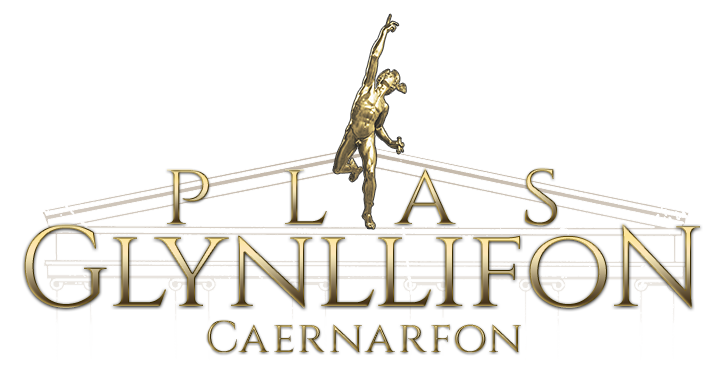A Brief History of Plas Glynllifon
The name "Plas Glynllifon", like most place names in Welsh, has a rough translation to an English equivalent.
"Plas" is a manor, or large house. "Glynn" is a valley, similar to the Scottish "Glen", and the "Llifon" is the river which runs through it. "Llifon", however, also translates to "flowing water", so Plas Glynllifon means "The Manor in the valley of flowing water".
The current house lies less than five miles from the Royal Town of Caernarfon with its dramatic, thirteenth century, waterfront castle. This castle has been the site of the investiture of the last two Princes of Wales, Prince Edward (later King Edward VIII and Duke of Windsor) in 1911, and HRH Prince Charles in 1969. It was after this second ceremony that Plas Glynllifon was used as the venue for an Investiture Ball, organised in part by his aunt, Princess Margret, then Countess of Snowdon.
The building as it stands now was built by one Spencer Bulkley Wynn, the third Lord Newborough, following a huge fire which completely destroyed the previous building on February 12th 1836. The main house was completed in 1848, but the buildings, grounds and nearby Llandrog continued to see development throughout the Third Lord's life. He died in 1888, and large parts of the Newborough Estate, which included Glynllifon, passed to one of his sons, The Honourable Frederick George Wynn. It was he who added the large wing and courtyard to the west of the main building, and the glass conservatory to the north.
The story of Glynllifon can be traced back much further than this though. Legend has it that the land was first settled in the 9th Century by a semi mythological figure, Prince of The Isle of Man and one of the founders of the fifteen noble tribes of Gwynedd, who went by the name of Cilmyn Troed Ddu - or 'Cilmyn Black Foot'.
There are several stories of how this name came about. The most romantic of these involves a Giant, evil spirits and a magical tome. Possibly more plausible though is that he suffered from one of the effects of scurvy. Whichever story you prefer, the Glynllifon, and subsequently the Newborough Family Coat of Arms proudly bare the image of a black leg to this day, lending some credence to the myth.
The first historical record of ownership dates back to the early 13th Century with one Ystrwyth ab Ednowain, a nobleman and, so the story has it, counsellor and trusted advisor to Llywelyn the Great, Prince of Gwynedd. This trust may well have been misplaced however, as the family chose to support the English Crown during the uprising which saw Llywelyn ap Gruffydd, Prince of Wales, defeated in 1282, they also fought on the side of the English King, Henry IV against Owain Glyndwr's troops at the Siege of Caernarfon, and the Battle of Tuthill in 1401.
Returning to more recent times, The Honourable Frederick George Wynn died in 1932, and the estate passed to Thomas John Wynn, then 5th Lord Newborough. Thomas Wynn was forced to sell Glynllifon in 1948. It was bought by a timber merchants, who then sold much of it on, just six years later, to Caernarfonshire County Council for use as an Agricultural College, and courses are still run from the site.
